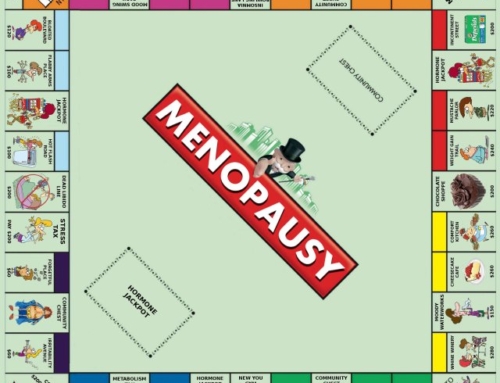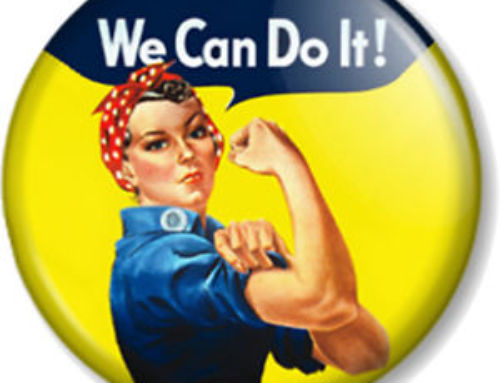When I first started blog writing a friend said to me, “I’m enjoying your blog, but don’t you think it’s a bit ambitious? Aren’t’ you afraid you’ll run out of things to say?” HA! I look forward to the day that I have nothing to say, when there are no more magazine covers objectifying women, and environmental and social health unilaterally foreshadow economic decisions. I promise to shut up on that day!
Waiting for a friend several days ago I spotted the latest Australian Women’s Weekly magazine on the coffee table. Always fabulous fodder. I flipped through the pages. An article about Steve Biddulph’s new book, Raising Girls, caught my eye. Internationally acclaimed for his straightforward and easy to read book, Raising Boys, Steve Biddulph again spells out some really down-to-earth, common sense parenting for our daughters. But where is our common sense? Have we gradually surrendered our parenting instincts, and subsequent authority, to the media’s vested interest version of values??
The article’s headline points to parenting healthy adolescent girls. In the first paragraph the female journo, Susan Horsburg, reveals she is a mother of a two and four year old daughter. She describes her two year old as having “…the physique of your average bar fridge.” Ouch! That hurt. I wince. Was that meant to be funny? The writer has already lost my faith in her intelligence. Perhaps she hasn’t read the book she is reporting on. Or perhaps she is another casualty in a media war on women’s intelligence (dressed in drag as a war on wrinkles). I can’t imagine Bauer Media, the multi-billion dollar international magazine publishers (who also produce a host of television shows, TV guides, real estate guides and radio shows), really want to support Steve Biddulph’s simple and effective suggestions which strongly advocate LESS TV, LESS screen time, and LESS focus on body image, lest our daughters intentionally choose to sidestep the media’s profit driven psychological grooming and eventually NOT join the 2.4 million Australian Women’s Weekly readers.
When I teach media awareness to teen and tween girls we look at lots of girly mags. (No need to purchase them new, plenty at the op shop!) When asked, ‘What do you feel when you see these dominant images? How do you feel?’, the girls’ most common responses are, ‘I feel ashamed, embarrassed, for her, but also for myself. I feel like putting more clothes on her, …taking off her make-up to see what she really looks like,… I feel inadequate. I feel like I’m not good enough. I feel BAD.’
I wanted to look more closely behind the scenes of Australian Women’s Weekly, so I went to the Bauer Media website to hear direct from the horse’s mouth . Below in italics are excerpts taken from their website.
Bauer Media Group is Australia’s leading magazine publisher. The Group publishes around 400 magazines and more than 100 online products in 15 countries worldwide.
Magazines drive PURCHASE INTENT through appeal and influence. Magazines don’t just deliver a message – they deliver a message with influence to a consumer with an interest. Our specialist media research team is responsible for generating in-depth reader insights and a richer understanding of the unique role magazine advertising plays in influencing purchasing decisions. –ACP magazines, (purchased by Bauer Media Group in Sept 2012 for an undisclosed amount),)
HOW – In a consumer insight study 200 women between the ages of 18 and 64 read 11 of Bauer’s magazine titles between them, while their levels of neurological activity were measured. Simulating a natural reading environment, participants were given three magazines that were of relevance to them and asked them to read each between 10 and 20 minutes. Brand logos were shown before and after the reading activity to measure changes and lifts in brand salience pre- and post-exposure. With every millisecond throughout, we measured the activity of each part of the brain to see what was firing
All up, we assessed the neurological response to 40 ads. The neuro study was supplemented with an online study of 2,500 magazine readers.
DID YOU KNOW? – After reading, brand salience improved, increasing by an average of 7.3%. 95% of advertised brands tested saw their brand salience improve.
DID YOU KNOW? – In an online consumer insight study by Bauer Media 31% of teen girls won’t leave the house without make-up on- even to go to school!
Is anyone really concerned about the plight of today’s teen girls: eating disorders, self harm, anxiety and depression? The same magazine issue has bold headlines that read, ‘The Perfect Health Diet’, ‘Perfect Pouts’, ‘Perfect Summer Skin’, ‘Our Perfect Hideaway’.
In any given publication period 39% of all women aged 15-24 in the UK will read a Bauer magazine and 41% have watched a Bauer TV station in the last week (more than 1.5 million women between 15-24)
Wow. What an overarching influence! This is BIG money, even though your Women’s Weekly will only set you back $6.95 a month.
Wake up with your buying power. Did you know that marketing psychologists are already targeting our children for brand identification beginning at age 6 months? It’s never too late to self educate about whose happine$$ we are buying through our media and consumer choices. If we are concerned for the health and self esteem of our tweens and teen girls, let’s begin with ourselves as women. Our daughters will be more influenced by what we do than what we say. Do you think the journalist’s two year old daughter will be unaffected by her mother’s pub-style humour put-down about her physique?
I’m not sure if the article’s reference to girls as “what used to be the far more robust gender…” is the reporter’s perspective or Steve’s. Which century was that? Yes, the female gender has been more compliant with social norms due to overt and covert oppression. Up until the 1970’s women were rarely even counted in statistics on mental health, and most studies of psychology were done by men, about men, and used to perpetuate generalised statements about humans. Let’s face it, females are struggling with self-esteem issues born of centuries of systematised silencing, abuse, social inequality, and blatant disrespect. And now media continues conveniently capitalizing on that.
Susan reminds readers that Steve’s parenting tips aren’t ‘particularly groundbreaking’, especially as his books expose the harmful effects of daily doses of a mainstream media diet on our children. An journalistic attempt to dumb down the anti-media advice. I have my own issues with some of Steve Biddulph’s blanket statements. Like: ‘Dad’s are the key to a girl’s confidence’, or ‘Parents should trust their instincts’, but how many parents recognize the degree to which they are parenting under the influence of mass media?
Later in the article the mother-journo complains about the tyrannical pressures of having to be the ‘perfect mum’ with the perfect kids, as if Steve Biddulph’s suggestions were too burdensome. A fabulous decoy away from the obvious tyrant in the room; not surprisingly one of the quotes the magazine chose to highlight (in pink!) from Biddulph’s book Raising Girls was ‘TV has become the third parent.’ His parenting tip about minimum media exposure features in smaller print on the bottom.
Are the article’s mixed messages the influence of the editor, or is mainstreaming too strong a current to resist in a climate where journalists’ jobs tiptoe on thin ice. We are struggling with an economic downturn, after all. But not The Australian Women’s Weekly.
‘Despite the tough times in media at the moment, The Australian Women’s Weekly has won another 245,000 readers in the past 12 months, an 11.3 percent year-on-year rise, according to Roy Morgan’s June 2012 survey.’
Bauer Media Group publishes over 80 titles in Australia, including …the biggest selling monthly magazine, The Australian Women’s Weekly, … Woman’s Day, Dolly, NW, TV Week, Cleo, Cosmopolitan, Australian Gourmet Traveller, madison, Grazia, Australian House & Garden, just to name a few.
At every opportunity the journalist manages to undermine Biddulph’s credentials while purporting to advocate his book. Raising Girls counsels parents to focus on girls’ inner qualities vs. their appearance. The Women’s Weekly writer discloses her own values as she punctuates her descriptions of Steve with condescending adjectives describing his appearance. Of course, Steve’s suggestions are not going to breed fashionista compliant consumers to line the pockets of Bauer Media’s CEO, (#634 world billionaire -Forbes magazine), Germany’s 37 year old Yvonne Bauer.
Ideals and directives aside, lets’ stay with what is simple: as mothers we are our daughter’s first sister, her first introduction to core feminine values. When was the last time we reviewed ours?
Women’s Weekly targets women in the 25-54 age bracket. Women who bleed. In 1982 the magazine was changed from a weekly publication to a monthly publication. To avoid any mention of the taboo ‘woman’s monthly’, the name Women’s Weekly was kept.
‘The Australian Women’s Weekly is celebrating over seven decades as the country’s premier monthly magazine … and is still the number-one selling monthly. The magazine has been called many things … an icon, a jewel in Australia’s crown,…’






